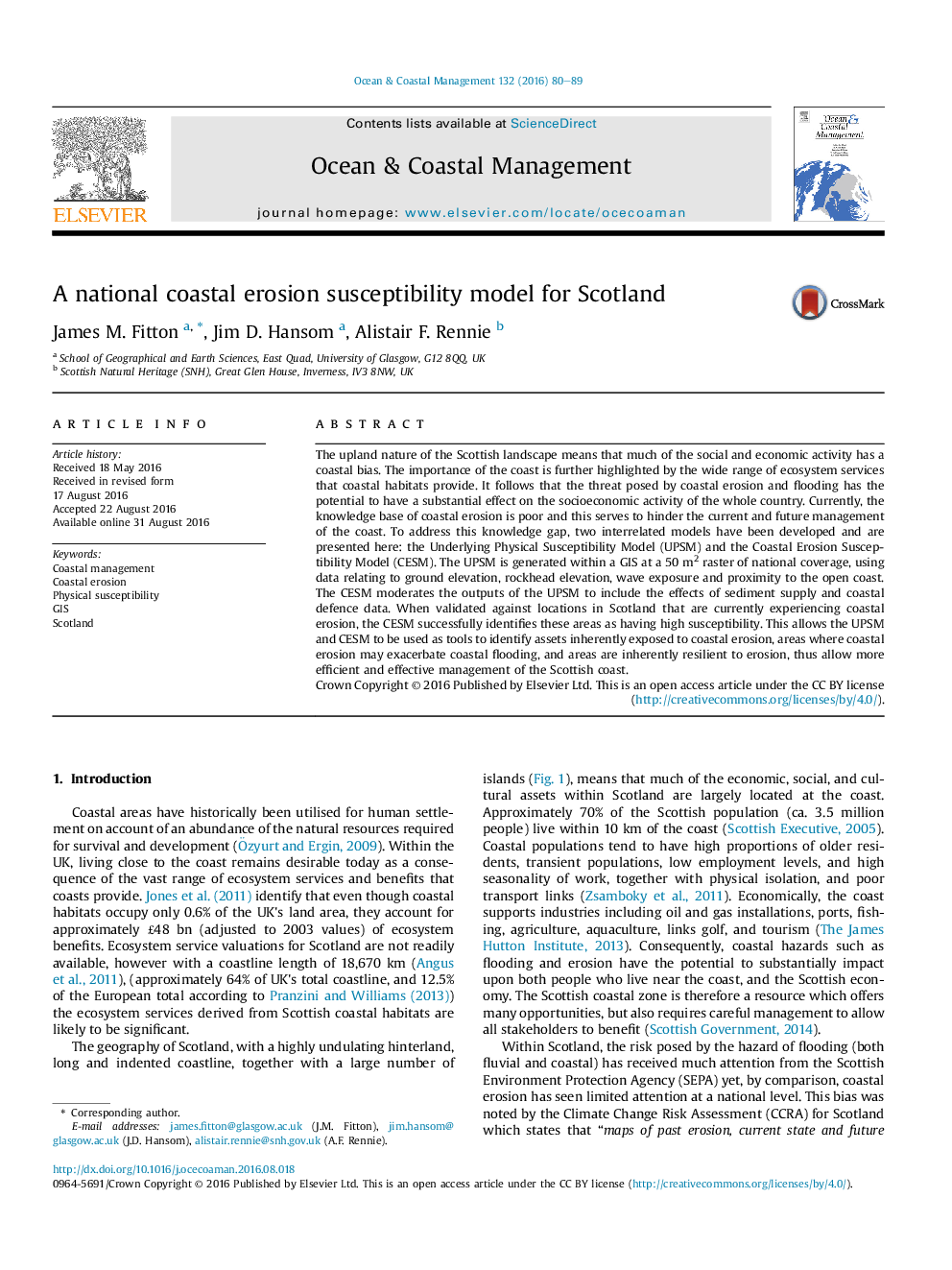| Article ID | Journal | Published Year | Pages | File Type |
|---|---|---|---|---|
| 8061008 | Ocean & Coastal Management | 2016 | 10 Pages |
Abstract
The upland nature of the Scottish landscape means that much of the social and economic activity has a coastal bias. The importance of the coast is further highlighted by the wide range of ecosystem services that coastal habitats provide. It follows that the threat posed by coastal erosion and flooding has the potential to have a substantial effect on the socioeconomic activity of the whole country. Currently, the knowledge base of coastal erosion is poor and this serves to hinder the current and future management of the coast. To address this knowledge gap, two interrelated models have been developed and are presented here: the Underlying Physical Susceptibility Model (UPSM) and the Coastal Erosion Susceptibility Model (CESM). The UPSM is generated within a GIS at a 50Â m2 raster of national coverage, using data relating to ground elevation, rockhead elevation, wave exposure and proximity to the open coast. The CESM moderates the outputs of the UPSM to include the effects of sediment supply and coastal defence data. When validated against locations in Scotland that are currently experiencing coastal erosion, the CESM successfully identifies these areas as having high susceptibility. This allows the UPSM and CESM to be used as tools to identify assets inherently exposed to coastal erosion, areas where coastal erosion may exacerbate coastal flooding, and areas are inherently resilient to erosion, thus allow more efficient and effective management of the Scottish coast.
Related Topics
Physical Sciences and Engineering
Earth and Planetary Sciences
Oceanography
Authors
James M. Fitton, Jim D. Hansom, Alistair F. Rennie,
